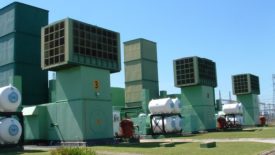Home » Keywords: » Battery Storage
Items Tagged with 'Battery Storage'
ARTICLES
Power
2024 Top 400 Sourcebook: Mississippi Builds First Big Solar-Storage Complex
Tech giant Meta also to gain power from 550-MW project to support two data centers under deal with utility TVA
Read More
Clean Energy Construction
Battery Innovator Form Energy Secures $30M California Grant for 100-Hour Storage Project
Read MoreRenewable Energy
Arizona Utility Plans $294M Battery Array To Store Solar Power
Lithium-iron phosphate storage system would be among the nation's largest
Read More
The latest news and information
#1 Source for Construction News, Data, Rankings, Analysis, and Commentary
JOIN ENR UNLIMITEDCopyright ©2024. All Rights Reserved BNP Media.
Design, CMS, Hosting & Web Development :: ePublishing














